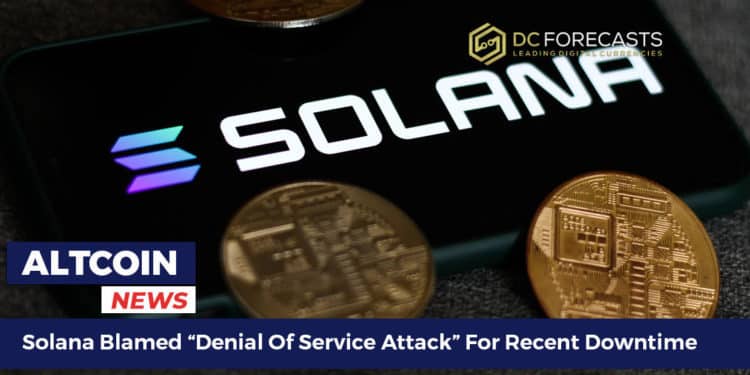Solana blamed “denial of service attack” for the recent downtime that we reported in our previous altcoin news.
Solana blamed and pointed out in its initial postmortem report of the network outage that it happen due to a “denial of service attack.” The foundation said that a flood of transactions caused by the bots was actually a denial of service attack. After a few weeks of upward momentum, during which time the price of the coin multiplied about five times in value as Solana hit a serious roadblock a week ago when the blockchain network went offline for more than 17 hours starting on September 14. the Foundation issued an initial report of the event and cast the rood cause in some new light.

Most of the information in the report confirms that was tweeted a week ago on the Solana official Twitter accounts or that of the Solana CEO Anatoly Yakovenko so in essence the network got overwhelemd by a flood of incoming transactions which the Foundation pegged previously up to 40,000 per second. The flood started during the launch of the initial decentralized exchange offering or an IDO which was hosted on the Solana-based decentralized finance protocol Raydium. The IDO is a type of token launch which happens on a DEX rather than the initial coin offering on a centralized exchange.
In this case, the IDO was for Grape Protocol as a widely used Solana toolset for the DeFi developers and the network got fast overwhelemd by the transactions generated by bots that were trying to break the way to success in the token offering. The transactions overwhelmed the network and caused a crash due to the amount of memory being used so the network stopped producing blocks when it could not consensus over the current status of the blockchain. A week ago, Solana pegged resource exhaustion as the cause of the downtime.

While the reports still line up with last week information, Solana pointed:
“The cause of the network stall was, in effect, a denial of service attack.”
While not a traditional DDOs attack, Solana’s statement suggested that the end result was still similar. The network’s validators chose to update and restart the network which created a hard fork and took 14 hours to coordinate and to restart the effort, requiring 80% of validators to get the network up and running.
DC Forecasts is a leader in many crypto news categories, striving for the highest journalistic standards and abiding by a strict set of editorial policies. If you are interested to offer your expertise or contribute to our news website, feel free to contact us at [email protected]























Discussion about this post